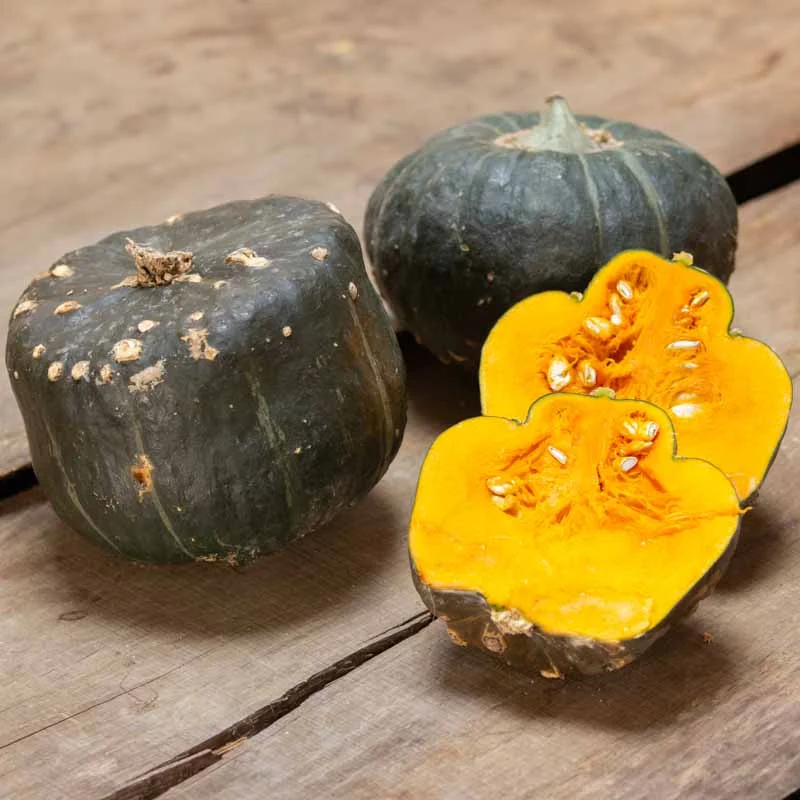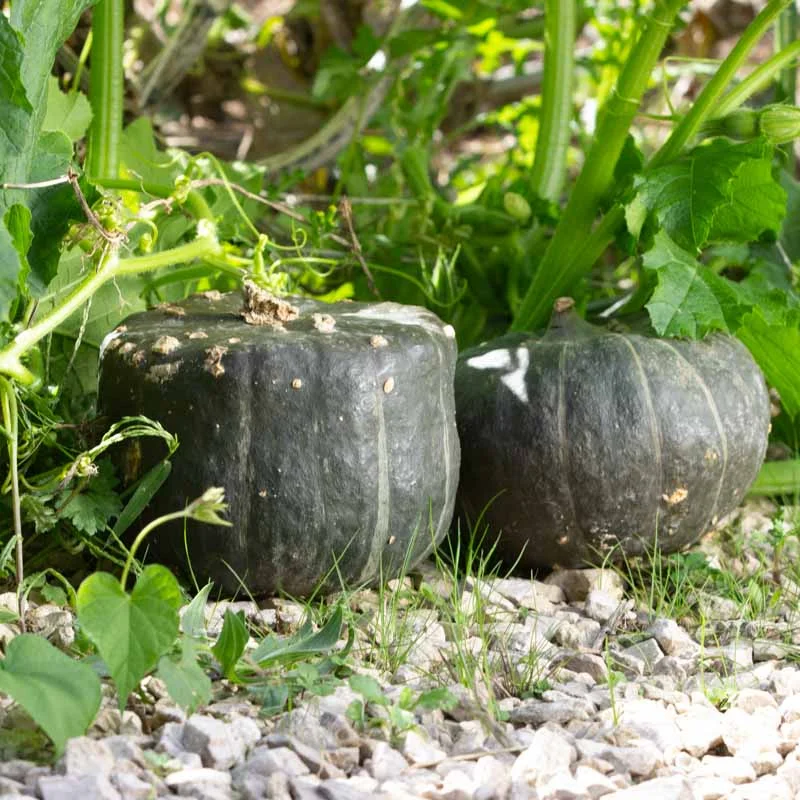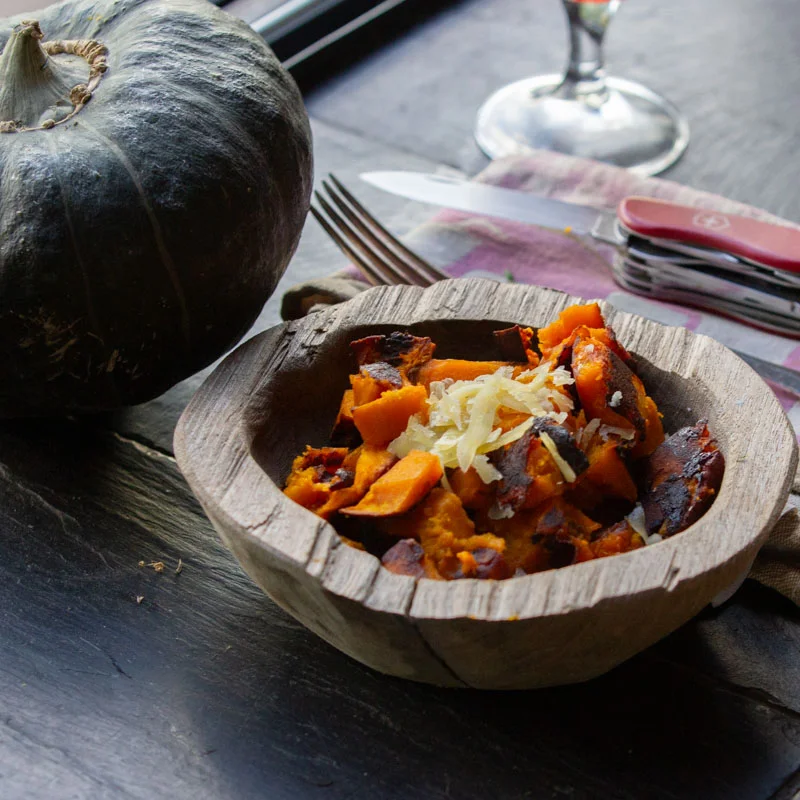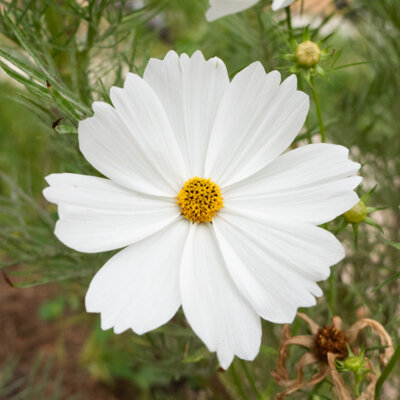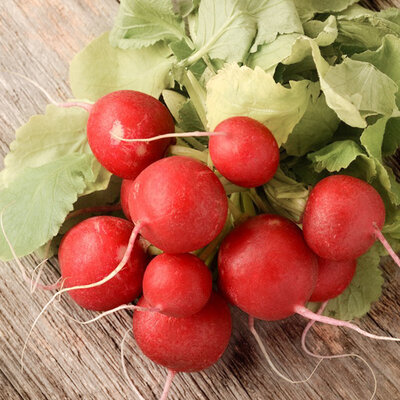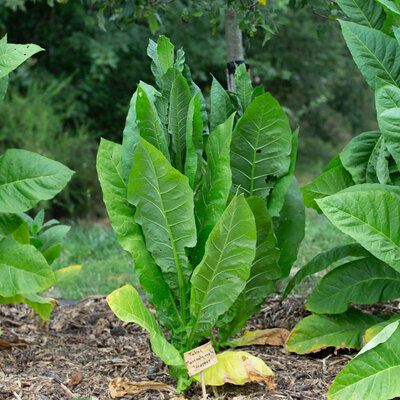Buttercup Burgess - Maxima squash
Buttercup Burgess squash is an old-fashioned variety with very flat turban-shaped fruits up to 20 cm in diameter and weighing up to 2 kg. Their dark-green skin, striped with gray-green stripes, encloses bright-orange, fine, sweet flesh. The fruit keeps for 3 to 6 months.
Description of the Buttercup Burgess squash
Buttercup Burgess squash, Cucurbita maxima, is an ancient variety of pumpkin, originating in the United States and introduced in 1952 by Burgess Seed & Plant Co. It is a bushy selection of the "Buttercup" variety, itself introduced in 1931. Closely related to the Buttercup Bush squash, this semi-hardy variety produces 3 to 5 flattened turban-shaped fruits, 15 to 20 cm in diameter and weighing up to 2 kg. Their dark green skin, streaked with grey-green stripes, encloses firm, sweet orange-red flesh. They keep well, and can be eaten raw, grated or cooked in soups, soufflés or gratins, as an accompaniment to meats and other vegetables. Squash flowers are also edible.
How to sow Buttercup Burgess squash?
Buttercup Burgess squash is sown in pots of 2 to 3 seeds, 2 to 3 weeks before transplanting, from March to May.
Place seedlings under a light shelter, at a temperature of between 18 and 20°C, and keep the substrate moist until the seeds emerge. Be careful not to sow squash seeds too early in the season, in which case the roots will become fibrous, making growth difficult in the garden. Transplant into the vegetable garden once the last frosts have passed.
From April to June, after the last risk of frost, it is possible to sow directly in the garden in 2 to 3-seed stacks.
Prepare 2 weeks in advance holes filled with compost or organic matter, spaced 2 m apart in all directions, to accommodate the squash plants or seeds. Mulch the soil to maintain sufficient humidity and limit water evaporation.
Next to the squash, we recommend sowing corn and beans, giving rise to the "three sisters" or milpa crop. Also plant basil to repel pests.
When to harvest Buttercup squash?
Although Buttercup Burgess squash fruits can be harvested and eaten immaturely, those intended for winter storage should be picked as late as possible, before the first frosts, from July to November, when the stalk begins to dry out and the skin becomes thick. Be careful not to tear them off, but cut as close as possible to the stem, 10 cm above the stalk.
This variety can be stored for 3 to 6 months in a ventilated, dry place, at a temperature of between 10 and 12°C. Place the fruit, spaced apart and tail up, in crates set high up. They can also be frozen for up to a year, after slicing and cooking.
How to cook Buttercup squash?
In the kitchen, this variety of squash can be eaten cooked or grated raw, in both savory and sweet recipes. A source of vitamins A, C and fiber, its firm, sweet flesh is delicious in oven fries, pecan pie or a creamy vegetable soup.
These products may also be of interest to you
in bucket, in the ground
Sow in pots at 18-20°C, 2 to 3 weeks before planting. Transplant with the root ball into the ground, after the last frosts, at a minimum distance of 2 m in all directions. To sow directly in the ground, sow after the last frosts, once the soil has warmed up. In both cases, prepare holes filled with compost or organic matter two weeks in advance to accommodate your seedlings or seeds.
March, April, May
April, May, June
July, August, September, October, November
in the ground
sunny
fort
humus
rich, heavy, furniture
Cucurbita maxima
mid-season
From 1500 to 2000 g
12 seeds
cylindrical
farm
Green
edible
From 150 to 400 cm
From 15 to 20 cm
semi-hot
United States
1952
This old variety is a bushy selection of the "Buttercup" variety, itself introduced in 1931. It was introduced in 1952 by Burgess Seed & Plant Co.
Burgess Seed & Plant Co.



